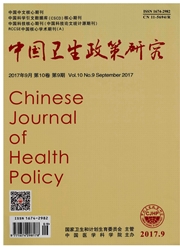

 中文摘要:
中文摘要:
目的:预测北京市城镇职工医疗保险未来参保人口规模及年龄、性别分布情况,进而测算北京市城镇职工医疗保险基金的可持续性缺口及其年度政府财政负担额。方法:构建预测模型,基于北京市第六次人口普查数据,并结合北京市人口政策和经济发展状况,定义和选择了模型参数,以2010年为基期,对北京城镇职工医疗保险未来85年参保人口及可持续性缺口进行了预测。结果:北京市城镇职工医疗保险参保人口将于2020年达到最大值,此后呈下降趋势;参保人口老龄化程度在逐年加速,将于21世纪中期达到顶峰;未来85年将累计出现至少9 541.35亿元的可持续性缺口,北京市政府需平均每年至少留出446.93亿元的财政资金,才能填补缺口,保证基金可持续发展。结论:北京市城镇职工医疗保险未来运行存在巨大的财务可持续性风险,如果当前政策不做调整,将难以维持。
 英文摘要:
英文摘要:
Objective: To forecast Urban Employees' Basic Medical Insurance( UEBMI) in the next 85 years based on population size,age and gender distribution,and to calculate its sustainability gap. Methods: According to the population policy of Beijing and economic development of the region; based on the data of the sixth census in Beijing,the estimation model was constructed,and its parameters were defined and selected. Based on the period of2010,the future of UEBMI in the next 85 year was predicted based on the population size,age and gender distribution. Results: The population of UEBMI in Beijing will reach the maximum value in 2020,and then the downward trend will increase. The aging rate of the insured population will accelerate year after year and will reach the peak in the middle of this 21 st century. The sustainability gap is predicted to reach at least 9 541. 35 Billion dollars,and the Beijing municipal government is expected to level an average of at least 44. 693 billion yuan per year to set aside the financial funds in order to fill the gap,so sustainable development of the fund is ensured. Conclusion: From the point of view of the insured population,there is a huge financial sustainability risk in the future of UEBMI in Beijing.
 同期刊论文项目
同期刊论文项目
 同项目期刊论文
同项目期刊论文
 期刊信息
期刊信息
